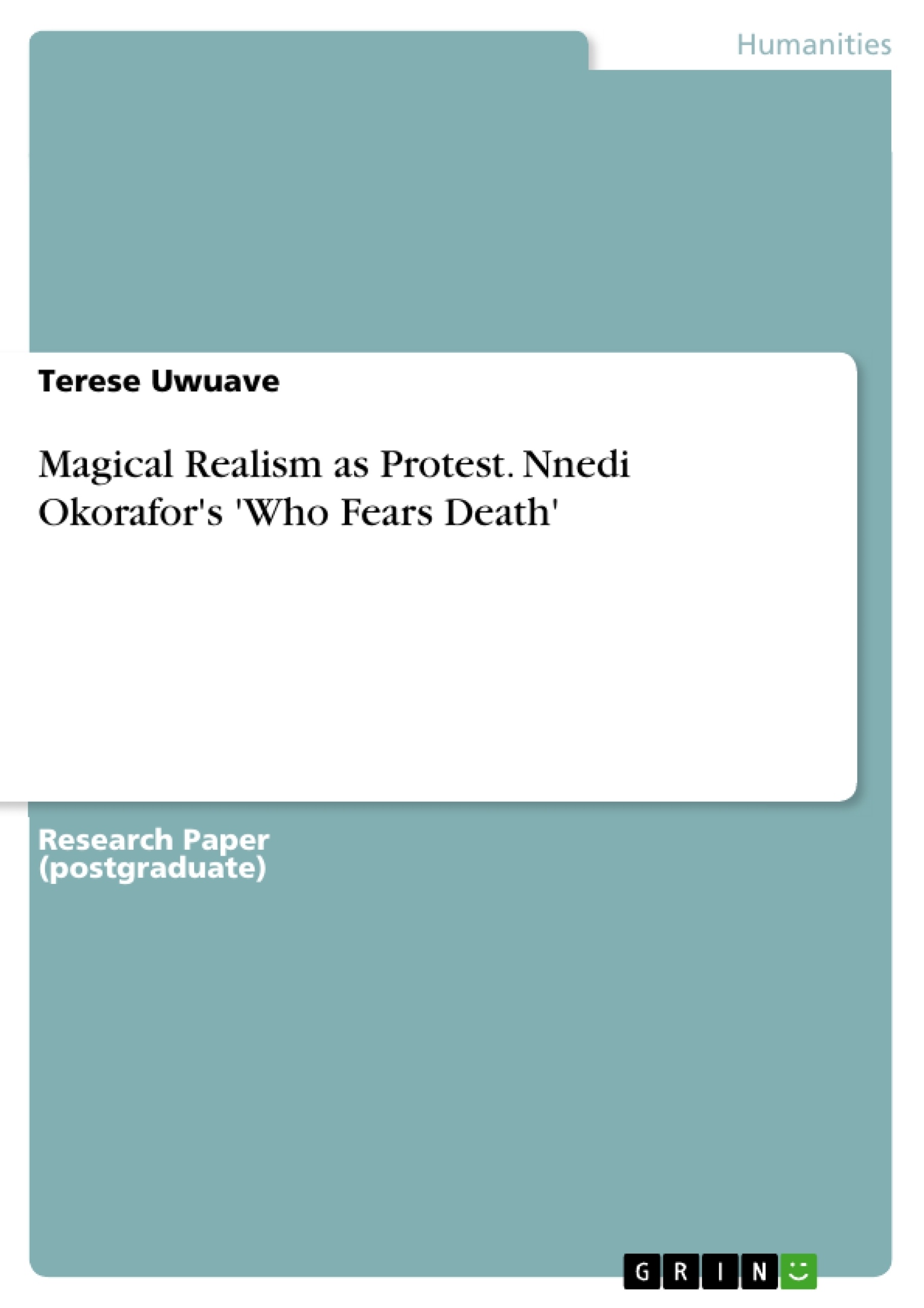Nnedi Okorafor's novel, "Who Fears Death," published in 2011, has garnered considerable critical acclaim primarily as a work of speculative fiction. While existing analyses have delved into the novel's speculative nature, one aspect that has received limited attention is its magical realist elements. This paper aims to explore Okorafor's use of magical realism in "Who Fears Death," acknowledging the global significance of magical realism as an alternative narrative strategy.
Magical realism is recognized as a dominant form of fiction in the contemporary world, with widespread participation by writers from diverse cultural backgrounds. Okorafor's novel, positioned within this literary diaspora, employs magical realism to convey a unique perspective on Africa's hybridity, history, spirituality, and culture. The paper adopts magical realism as its interpretative model to investigate key features present in the novel.
The analysis reveals that "Who Fears Death" incorporates notable magical realist motifs, such as the manifestation of resistance, the trope of 'the book-within-a book,' and the use of critics and tricksterism techniques. These elements, typical of magical realist narratives, serve not only to astonish readers, as in fantasy literature, but also function as a critique of Western realist narration. Importantly, they act as powerful tools of protest against issues like oppressive regimes, female genital mutilation, ethnic crises, genocide, rape, and power abuse—persistent challenges faced by postcolonial African nations.
Okorafor's choice of magical realism as a protest tool amplifies her critique, making her message more poignant and explicit. Through the novel, she contends that until Africans collectively confront and resist the societal ills hindering progress, embracing values of peace and love, they will remain entangled in the quagmire of hate, corruption, war, political crises, and underdevelopment.
In essence, "Who Fears Death" emerges not just as a speculative fiction piece but as a poignant magical realist narrative that transcends geographical boundaries to address universal socio-political issues, using Africa's rich cultural tapestry as a lens for exploration.
Table of Contents
- Abstract
- Introduction
- Conceptualising Magical Realism
- Magical Realism in Nnedi Okorafor's Who Fears Death
- Conclusion
- Works Cited
Objectives and Key Themes
This paper examines the deployment of magical realism in Nnedi Okorafor's novel, "Who Fears Death," arguing that magical realism is a key element of the work's narrative structure and thematic content. The paper explores the ways in which Okorafor uses magical realism to critique Western realist narration, address issues of oppression, and offer a unique perspective on African culture and identity.
- The use of magical realism as a critique of Western realist narration.
- The exploration of postcolonial Africa and its struggles with oppression, including female genital mutilation, ethnic crisis, genocide, rape, and power abuse.
- The role of magic and the supernatural in creating a unique world that reflects the complexities of African culture and spirituality.
- The significance of the phenomenal world and its connection to the magic present in the novel.
- The exploration of themes related to resistance, identity, and the struggle for liberation in a postcolonial context.
Chapter Summaries
The Introduction provides an overview of the critical reception of "Who Fears Death" as a work of speculative fiction. It then highlights the absence of critical attention on the novel's magical realist elements, establishing the paper's focus on analyzing this aspect of Okorafor's writing.
The chapter titled "Conceptualising Magical Realism" delves into the origins and definitions of magical realism. It traces the evolution of the term from its roots in art criticism to its contemporary usage in literature. The chapter discusses the challenges of defining magical realism and explores the defining characteristics of the genre, drawing on various critical perspectives.
The chapter titled "Magical Realism in Nnedi Okorafor's Who Fears Death" examines the specific ways in which magical realism is employed in the novel. It analyzes the role of the phenomenal world, irreducible elements, and the merging of realms in creating a unique and impactful narrative experience.
Keywords
The key keywords and focus topics of this paper are: magical realism, speculative fiction, irreducible elements, postcolonial literature, African culture, female genital mutilation, ethnic crisis, and oppression.
- Quote paper
- Terese Uwuave (Author), 2024, Magical Realism as Protest. Nnedi Okorafor's 'Who Fears Death', Munich, GRIN Verlag, https://www.grin.com/document/1438407




